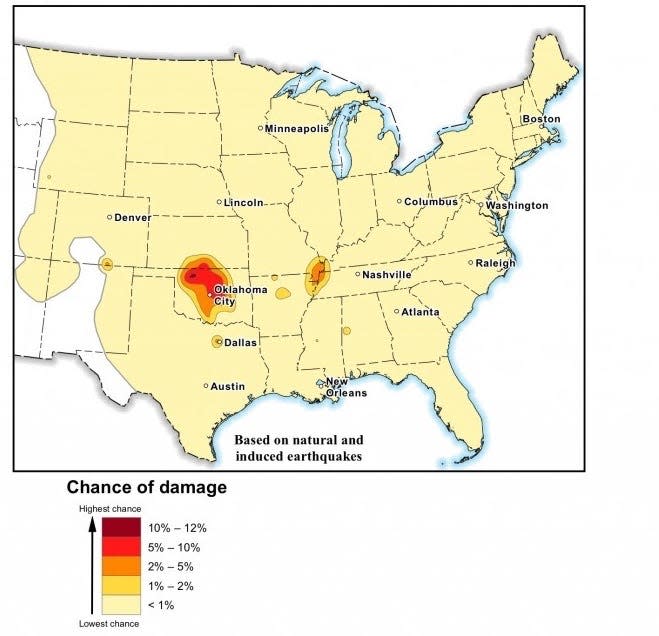These 6 states are the most at risk of a human-caused earthquake this year

Seismic activity is no longer dependent on natural causes. Human activity is playing a role as well.
The US Geological Survey recently mapped all the places that are most likely to be damaged by human-induced earthquakes in 2016. This is the first time the USGS has accounted for the quakes we are causing.

USGS
For the most part, human-induced earthquakes are caused by the injection of wastewater deep beneath the Earth's surface. It typically comes from oil and gas mining sites. Fracking — or the process of using high-pressured water to release oil and natural from rocks — isn't causing most of the induced earthquakes, according to the USGS.
The states at the most risk for potentially disastrous human-induced quakes (from highest to lowest risk) are:
Oklahoma
Kansas
Texas
Colorado
New Mexico
Arkansas
Of that group, Oklahoma and Texas have the largest populations that would be directly affected by the induced earthquakes, the report said. Particularly, the risk for Dallas is ten times higher than it was in 2008, The Dallas Morning News reports.
Related: Learn more about active fault lines in the United States:
The results came from reports of shaking and damage in those areas from the last five years, as well as self-reported data from people who felt shaking in their state.
The West Coast, which sits on a number of naturally-occurring quake fault lines, wasn't included in USGS' most recent study, since the majority of its quakes have natural causes. Here's how its 2016 quake risk compares to the rest of the country:

USGS
See Also:
SEE ALSO: Green islands look red from space — here's why
NEXT: Giant holes found in Siberia could be signs of a ticking climate 'time bomb'
